
The Complete Guide to TRT for Men

Testosterone Replacement Therapy (TRT) helps treat low Testosterone, or hypogonadism, in men. It can help restore Testosterone levels and improve quality of life by relieving life-disrupting symptoms like erectile dysfunction, fat gain, fatigue, and more.
There are many different delivery systems for Testosterone therapy, the most popular of which are Testosterone injections and topical creams and gels.
This guide will cover the basics of Testosterone deficiency and TRT, including symptoms, delivery methods, optimal ranges, ancillary medications, and more.
What is Testosterone?
Testosterone is an anabolic steroid produced by the testes in men and, to a lesser extent, the ovaries in women.
In men, Testosterone is responsible for many functions, including the development of secondary sex characteristics like growth of body hair, increased muscle mass, and others. Testosterone is also responsible for developing the prostate and the testes, as well as playing an important role in male sex drive and sperm production.
Testosterone affects many factors throughout the male body, as well, including red blood cell production, fat storage, mood, and more – which is why a Testosterone deficiency can lead to symptoms that reduce quality of life.
What is a Testosterone Deficiency?
Testosterone deficiency syndrome, also called hypogonadism or Low T, is a medical condition in which the body doesn’t produce enough Testosterone.
Hypogonadism causes can include:
- Aging
- Obesity and weight gain
- Certain medications
- Metabolic disorders
- Type-2 diabetes
- Sleep apnea
- Excess estrogen production
- Excessive smoking and drinking
- Issues with the pituitary gland or hypothalamus
- Certain medical conditions
Diagnosing Testosterone deficiency is multi-factorial and requires the medical provider to assess both comprehensive lab-work and the patient’s symptoms.
What are Normal Testosterone Ranges?
LabCorp defines the normal range for Testosterone in men as: 264 ng/dL to 916 ng/dL.
Does that mean if you have a Testosterone level of 265 ng/dL, you’re in the “normal” range and can’t experience low Testosterone symptoms?
Not exactly. There are a few issues with defined ranges like this.
For one, that range is very wide, and a man who has a level of 265 ng/dL will likely not have the same experience as a man with a level of 800 ng/dL. Yet they would both be considered normal if we only use this Testosterone scale for diagnosis. In addition, every man’s optimal range is unique to him and can depend on many physiological factors.
If you only look at lab-work and a predefined normal Testosterone range, you’re missing half of the story.
That’s why it’s important to incorporate symptomology into diagnosis.
Assessing symptoms helps providers understand how Testosterone levels are actually affecting the patient, which can identify whether there’s a Testosterone deficiency – even if the patient would be considered “normal” based on this range.
There’s also a difference between “normal” and “optimal.” At Defy Medical, we want to keep you in a healthy, normal range, but we also want you to be at an optimal range for your body, which might be higher than what a primary care or non-specialty doctor would have you reach.
Based on treating roughly 15,000 patients, we’ve found that the average optimal range for men is around 800 ng/dL – 950ng/dl. However, this isn’t a hard and fast rule, and it depends how the patient is responding to Testosterone replacement therapy.
That’s why we don’t offer cookie-cutter programs – because each patient has specific needs and unique optimal ranges.
What are the Symptoms of Testosterone Deficiency?
Testosterone deficiency or hypogonadism typically creates a constellation of interrelated symptoms. These low Testosterone symptoms can include:
- Erectile dysfunction and loss of libido (sex drive)
- Decreased strength and stamina
- Reduced exercise recovery
- Fat gain and change in body composition
- Fatigue
- Mood issues and irritability
- Depression and/or anxiety
Patients may exhibit some or all of these symptoms.
Because symptoms are so varied, a useful tool for both physicians and patients is the A.D.A.M. Questionnaire. This is a clinical questionnaire that help determine whether a patient is potentially experiencing Testosterone deficiency and could benefit from Testosterone replacement therapy.
The A.D.A.M. Questionnaire
1. Do you have a decrease in libido (sex drive)?
2. Do you have a lack of energy?
3. Do you have a decrease in strength and/or endurance?
4. Have you lost height?
5. Have you noticed a decreased enjoyment of life?
6. Are you sad and/or grumpy?
7. Are your erections less strong?
8. Have you noticed a recent deterioration in your ability to play sports?
9. Are you falling asleep after dinner?
10. Has there been a recent deterioration in your work performance?
Take the ADAM Questionnaire now to see your results.
This test is not intended to replace a consultation with a healthcare professional, nor is it intended to provide specific medical advice and should not be used by itself for the diagnosis or treatment of low Testosterone. It is a starting point which should be combined with a medical consultation and a comprehensive lab panel.
Who is Most Likely to Have a Testosterone Deficiency?
Approximately 40% of men over 45 experience low Testosterone. This is often the result of natural declining Testosterone levels in aging men but can sometimes be caused by medical conditions, especially those that are accelerated by age.
However, low Testosterone does not only affect older men. Younger men can experience declining levels of Testosterone for a myriad of reasons, including hereditary or acquired conditions that affect Testosterone production.
What Lab Tests Can Detect Low Testosterone?
If symptoms are half of the picture, the other half is blood testing that shows what is happening in a patient’s body.
Different clinics and providers have different testing requirements to determine low Testosterone. At Defy Medical, we require comprehensive testing that shows us a complete picture of the patient’s health, helps us understand their Testosterone and related levels, and eliminates other potential causes for the symptoms they are experiencing.
Unfortunately, primary care doctors and non-specialized providers tend to undertest, and they may miss valuable pieces of the overall health puzzle as a result.
We’ll go through each test Defy Medical requires and why.
Testosterone, Free and Total
To diagnose a Testosterone deficiency, of course we need to test for Testosterone levels. But there is a layer of complexity to testing for Testosterone.
Testosterone moves through the body in two ways:
- Attached to sex hormone binding globulin (SHBG) and albumin proteins – this is called bound Testosterone.
- Free, or unattached to any proteins – this is called free Testosterone.
Total Testosterone testing show us the total amount of both free and bound Testosterone in the blood. Free Testosterone shows the amount of Testosterone in the blood that can actually attach to Testosterone receptors and be utilized by the body.
Sex Hormone Binding Globulin (SHBG)
Because Testosterone attaches to Sex Hormone Binding Globulin (SHBG) in the blood, it’s important to know a patient’s SHBG levels.
If we only measure total Testosterone and ignore free Testosterone and SHBG levels, we’re missing an important piece of the puzzle. A patient may have good total Testosterone levels, but may also have elevated levels of SHGB, which would limit how much of that total Testosterone can be used by the body.
Estradiol Sensitive
Estrogen is considered a female hormone, but estradiol (the most common form of estrogen) is found in lesser quantities in the male body, as well.
Healthy levels of estradiol in men can help encourage sperm production, regulate the libido and support sexual function, among other uses. However, too much estradiol can lead to negative effects including erectile dysfunction, infertility, and in severe cases gynecomastia (the development of male breast tissue).
Because men have such a low level of estradiol to begin with, we must use an Estradiol Sensitive test because it is more precise and able to closely detect estradiol levels.
DHEA-S
Dehydroepiandrosterone sulfate (DHEAS) is an androgenic hormone primarily produced by the adrenal glands. DHEA can be converted into Testosterone and androstenedione, among other functions.
A DHEA-S test can help identify whether the adrenal glands are working properly and provide a full picture of the patient’s health.
Thyroid Stimulating Hormone (TSH)
Thyroid Stimulating Hormone, or TSH, is secreted by the pituitary gland. This hormone stimulates the thyroid to release triiodothyronine (T3) and thyroxine (T4), which are important hormones that perform many functions throughout the body.
Checking TSH levels is a screening tool for potential thyroid disease. Because certain types of thyroid diseases can present similar symptoms to hypogonadism, it’s important to assess thyroid function.
If the patient is experiencing many symptoms that indicate thyroid disease, we can also recommend a more comprehensive thyroid panel that can assess T3 and T4 levels in addition to TSH levels for a more complete picture of thyroid health.
Prostate Specific Antigen (PSA)
Prostate Specific Antigen, or PSA, is produced by the prostate in men. Testing for PSA can help assess for prostate conditions like benign prostate enlargement, prostatitis, and prostate cancer development
Luteinizing Hormone (LH)
In men, this hormone is responsible for stimulating the production of Testosterone in the testes. LH also plays an important role in sperm production, which in turn plays an important role in fertility.
Because LH is produced relative to the amount of Testosterone in the blood, this measurement is another piece of the overall puzzle of Testosterone levels. Testing LH levels can also identify potential pituitary issues.
Insulin-Like Growth Factor (IGF-1)
An IGF-1 test can help evaluate pituitary function, as well as measure levels of human growth hormone (hGH).
Comprehensive Metabolic Panel (CMP)
A comprehensive metabolic panel helps provide an understanding of the overall function of the liver and kidneys, along with electrolyte and fluid balance.
Complete Blood Count Panel (CBC)
This is a commonly ordered test to assess overall blood health. A CBC panel measures the levels of many aspects of the blood, including white blood cells, platelets, hematocrit, hemoglobin, and more. This test can be used to help diagnose a wide range of disorders and conditions.
Lipid Panel
The Lipid Panel helps to evaluate the risk of heart disease and arterial plaque. This test measures for total cholesterol, HDL cholesterol, LDL cholesterol, and more. Checking these levels helps your provider understand the total picture of your health.

Types of Testosterone Replacement Therapy
Testosterone comes in many different forms. The way in which Testosterone replacement therapy is supplied to the body is called a delivery system. These delivery systems include injections, topical creams, pellet implants, and more.
Each delivery system has its own benefits, and the right one for you can depend on your hormone levels, your body’s response to TRT, and your delivery system preferences.
Testosterone Injection Therapy
Testosterone injection therapy is the most popular delivery system when it comes to TRT. One reason is that Testosterone injections allow for the most control of the dosage, with the medication absorbing directly into the blood stream. Testosterone injection therapy is also ideal for making physician-guided adjustments with ease.
Testosterone injection therapy is just like it sounds – self-administered injections performed at specific intervals throughout the week, either delivered into the fatty layer of the skin (subcutaneous) or into the muscle (intramuscular). The injection interval depends on many factors, including the patient’s individual needs as well as the type of ester used in the Testosterone injection.
Types of Testosterone Esters
An ester is a molecular chain that attaches to Testosterone. Once injected, the body must break down the ester chain, which helps create a timed release of the hormone. Some Testosterone esters you may have heard of include Testosterone propionate, Testosterone enanthate, Testosterone cypionate, or a blend of esters in one prescription.
It’s important to note that the Testosterone itself doesn’t change. The only difference is the ester, which creates varying results based on how the body metabolizes the Testosterone. For Testosterone Replacement Therapy (TRT), esters are only part of the equation – the other part is the frequency and timing of the injections.
No matter the ester, the goal is to bring Testosterone levels up to optimal ranges. For most men, this is about 2 percent to 4 percent free Testosterone (Testosterone that is unbound in the blood). Any ester can achieve this goal based on timing of the injections, but patients may perform well on specific esters depending on many factors.
For example, your provider might recommend a combination of propionate and cypionate to help you achieve a faster “spike” in your Testosterone levels, because this provides you with symptom relief and helps you feel better. Remember each treatment is individualized, and what works for one person may not work for another. That’s why it’s important to find a provider who specializes in TRT and who is dedicated to creating unique protocols to meet your specific needs.
Testosterone Cypionate
One of the most prescribed esters, Testosterone cypionate can be metabolized by the body in approximately seven to eight days, which makes it a longer-acting ester. Many patients inject Testosterone cypionate via subcutaneous (SQ) injections twice a week or more.
Testosterone Propionate
This type of ester is faster acting than cypionate and can usually peak in the blood in a matter of hours. Testosterone propionate typically metabolizes fully in three days. Because of its fast-acting nature, propionate is often combined with other testosterone esters to allow patients to inject less frequently.
A benefit to propionate is that it allows for quick and effective stabilization of Testosterone levels. Men who suffer from significant hypogonadism symptoms like erectile dysfunction may prefer propionate’s fast-acting nature. While not offered commercially, Testosterone propionate is produced by compounding pharmacies.
Testosterone Enanthate
This type of ester is slower acting than propionate, with full metabolization typically occurring in four to five days. Studies show it can even remain in the body for up to two weeks in minute amounts. Injections typically occur twice weekly with an SQ injection. Some patients found Testosterone enanthate helped them retain less water than when using Testosterone cypionate.
Testosterone Undecanoate
Testosterone undecanoate isn’t a new ester, but it was recently approved by the FDA under the brand name AVEED®. Unfortunately, AVEED® can be expensive if insurance doesn’t cover it. Even when insurance does cover it, the patient is often limited in dosage range. This sometimes leads to patients either living with under-dosing or paying out of their own pocket to close the gap.
Undecanoate is one of the longest-lasting esters, with studies showing that Testosterone levels stayed elevated for almost three months after injection. Since everyone is different, some patients may require injections more frequently, including every 30 days or so.
Because of the lack of customization with the commercial prescription, Testosterone undecanoate doesn’t work for many patients, but it is available for patients who respond best to this ester.
Common Testosterone Ester Combinations
Ester blends are common with TRT. Blends are often made up of a fast-acting ester like propionate along with longer-lasting esters like enanthate or cypionate. Whether a blend works for you depends on factors like the unique timing of your protocol, the way your body metabolizes Testosterone, and your dosage requirements. Defy Medical providers can prescribe blends as appropriate for the patient.
Grapeseed Oil Versus Cotton Seed Oil
Along with the Testosterone and the ester, Testosterone injections also include an oil. Commercial injection typically use cotton seed oil, but many patients find cotton seed oil injections uncomfortable due to the oil’s viscosity.
Compounding pharmacies offer Testosterone injections suspended grapeseed oil (GSO), which is a thinner, more easily injectable oiL. This allows for more comfortable and shallower subcutaneous injections. This is an important benefit particularly to those who may be sensitive to injections.
Subcutaneous and Intramuscular Injections
In the past, Testosterone injections could only be administered intramuscularly with large needles. Luckily, the field of hormone restoration has made many advances, and Testosterone can now be delivered via smaller, subcutaneous or intramuscular injections. This allows for more comfort with injection and the ability to inject more frequently to ensure steady hormone levels.
Subcutaneous injections deliver the injection to the fatty subcutaneous layer in the skin. The injection is then absorbed over time into the bloodstream. By contrast, intramuscular injections deliver the medication to the muscle, where it is absorbed to the bloodstream, often more quickly than with subcutaneous injections. Intramuscular injections offer quicker effects, while subcutaneous injections are typically shallower and use smaller needless, causing less injection discomfort.
Depending on your protocol, your provider can let you know which injection method is best. Your protocol may also depend on your level of comfort with self-administered injections.
Topical Testosterone Gels and Creams
Topical Testosterone application is another popular delivery system. The Testosterone is combined with a gel or cream, which you apply to the skin. The Testosterone absorbs into the skin and then into the bloodstream over time. The window for absorption usually lasts 24 hours and mimics the natural rhythm of hormone levels.
Topical Testosterone is a good option for patients who want to avoid self-administered injections. Less of the product is absorbed – usually about 10% of what’s applied – so it’s important monitor your levels to understand how you are responding to the treatment.
Typically, men require 7 mg to 10 mg of absorbed topical Testosterone per day to reach optimized levels. Everyone is different, however, and your protocol will depend on your individual needs and responses to treatment.
Topical Testosterone Options
Topical Testosterone ins available in several different forms. These include:
- Heavy cream base – this base is typically compounded to include multiple hormones and deliver them to the skin.
- Light cream base – This base can be used in a variety of ways and can also help soften the skin while delivering transdermal Testosterone.
- Gel – This gel includes alcohol and has the double benefit of absorbing well into the skin and drying quickly, which can help eliminate potential transference to family members. However, the gel can sometimes irritate or dry out the skin.
- Transdermal Patch – Commercial patch products are available, wherein the Testosterone in placed on the patch which is then placed on the skin.
Potential Drawbacks to Topical Testosterone
Topical Testosterone creams and gels can be very useful for patients who wish to avoid injections. However, there are some drawbacks. These include:
- The skin can only absorb a small fraction of the Testosterone, which means much of the hormone in your prescription goes unused.
- Because it’s applied to the skin, there is a possibility of transference to family members, especially your spouse and children. It’s important to follow safety instructions to minimize transference.
- Topical Testosterone can potentially cause irritation at the application site depending on your sensitivity to the base. It’s important to work with a TRT clinic that provides multiple base options, so you can choose a base that is less likely to irritate your skin.
Some patients find these drawbacks worthwhile to avoid self-administered injections. Testosterone replacement therapy is an individualized treatment, and you (along with your care provider) will be able to decide what is best for you based on your responses and comfort level with various delivery systems.
Testosterone Pellet Therapy
If you prefer to avoid self-administered Testosterone altogether, Testosterone Pellet Therapy may be the right option for you.
In this type of therapy, a physician implants a Testosterone pellet just under the skin – usually in the hip or the buttock. The pellet will then deliver Testosterone into the bloodstream over 3-6 months. Pellets come in several different strengths and don’t have to be removed. Once the time period ends, you simply return to the Defy Medical clinic to receive another pellet insertion.
Testosterone Pellet Therapy patients typically have around four insertion procedures a year – making it a lower maintenance Testosterone replacement option.
The Testosterone Pellet Insertion Process: Step-by-Step
- Become a patient at Defy Medical by working with our Patient Advocate team to provide the necessary comprehensive labwork, recent Physical Exam, and new patient information.
- Make an appointment at the Defy Medical clinic in Tampa, FL.
- Consult with a Defy Medical provider to go over your options and make sure Testosterone pellets are right for you. This consultation is an opportunity to any questions and voice any concerns.
- If you and your provider decide pellets are the appropriate TRT treatment, the pellet or pellets will be inserted immediately following your consultation. You may receive one pellet or multiple, depending on your hormone levels and needs as a patient. The procedure is simple and typically requires little recovery time, though there may be some bruising and soreness at the insertion site. The pellet is inserted into the fatty subcutaneous layer of the skin, usually at the hip or buttock area. The skin will be anesthetized to eliminate pain, and the whole procedure typically takes around 15 minutes.
- Attend regular follow-ups with your Defy Medical provider and receive follow-up labs to monitor your results.
- Return to the office every 3-6 months depending on your protocol for another pellet insertion procedure.
Testosterone Nasal Gel
This relatively new delivery form is a way to receive a secondary dose of Testosterone via mucosal absorption (through the mucous membranes in the nose). It is not typically recommended as a primary delivery system, since it would require everyday usage multiple times per day.
However, Testosterone nasal gel can be a useful secondary treatment that allows for a small boost in Testosterone levels. Testosterone nasal gel can also be compounded with other hormones, like oxytocin, to create an individualized treatment.
Because you apply it to the inside of your nose, Testosterone nasal gel also reduces the risk of transference, unlike other topical applications.
How to Apply
Testosterone nasal gel comes in a convenient pen-like container with a silicone tip, which allow for easy application. Simply apply to the inner lateral-side wall. Each container of Testosterone nasal gel holds about 60 doses at 5 mg per dose.
Ancillary Treatments to Testosterone Replacement Therapy
There are several ancillary medications that can be used in conjunction with TRT. These can offset or improve TRT results in many ways. Depending on your needs, you may be prescribed an aromatase inhibitor (to suppress estrogen production) or other supplemental medication.
Read on to learn more about therapies that can work with your TRT plan.
Anabolic-Androgenic Therapies
Anabolic-Androgenic therapies can have positive effects when added to a TRT protocol. While still relatively new, there has been increased interest in using Anabolic-Androgenic therapies in relation to Men’s Health. These uses include age management, reducing excess body fat, encouraging muscle growth, and improving body composition. Anabolic-Androgenic therapies are sometimes also used in an off-label capacity to assist with injury recovery.
These types of therapies include:
- Oxandrolone – This medication is typically available as a capsule from both compounding pharmacies and as a commercial prescription.
- Nandrolone – This medication is provided as a compounded self-administered injection.
- Stanozolol – This medication is a compounded topical cream typically applied to the scrotum.
You and your Defy Medical provider will discuss your unique situation, symptoms, and potential ancillary medication options to come up with a customized protocol for you.
Erectile Dysfunction Treatment
Erectile dysfunction (ED) is one of the main symptoms of hypogonadism or Low-T. While bringing Testosterone levels up to optimal ranges often alleviates ED symptoms, Defy Medical providers can recommend additional treatments if necessary. These include PDE5 inhibitors like Sildenafil, Tadalafil, and Vardenafil in various dosage forms (capsules, troches, Oral Disintegrating Tablets, etc.).
For more serious ED cases, we also offer penile injections like Trimix, Bimix, and Quadmix. These are considered the most powerful ED treatment and can often provide symptom relief when PDE5 medication fails.
We offer Platelet-Rich Plasma (PRP) injections and Shockwave Therapy at our clinic in Tampa, FL, as well. These in-office procedures can help regenerate blood vessels and encourage new cell growth. PRP injections use your own plasma and growth factors, while Shockwave Therapy delivers acoustic waves to the penis to encourage regeneration.
Compounding Pharmacies and Testosterone
Testosterone Replacement Therapy requires unique treatments based on a patient’s hormone levels, constellation of symptoms, and overall goals for the treatment. Every patient is different and requires a different protocol to reach optimal levels and experience the benefits of TRT.
Through partnerships with specialized pharmacies, Defy Medical is able to prescribe individualized Testosterone prescriptions compounded to patient-specific dosages and with combinations as appropriate. In this way, Defy Medical providers can collaborate with our pharmacy partners to offer better, more optimized TRT protocols.
Commercial products do not offer the same freedom, and they are also often prohibitively expensive. Even when traditional health insurance covers commercial products for the treatment of hypogonadism, these products typically do not offer the same level of customization as prescriptions delivered to a compounding pharmacy.
All of Defy Medical’s pharmacy partners are carefully selected to ensure the highest quality possible. Pharmacies are licensed and comply with all FDA and DEA regulations and have passed their most recent FDA inspections.
Begin Your TRT Protocol at Defy Medical
Now that you have a basic overview of Testosterone Replacement Therapy, the next step is deciding where to begin your care.
Defy Medical has been offering hormone restoration and wellness services via telemedicine for nearly a decade. Our providers are experts in the field of Men’s Health and are current on the latest Testosterone Replacement Therapy protocols and delivery systems. Defy Medical has helped over 15,000 patients lead happier, healthier lives – and we can do the same for you.
Once you become a patient at Defy Medical, you access:
- Convenient telemedicine consultations via phone or video.
- An online Patient Portal where you can easily order prescription and have them shipped to your door.
- A Patient Support team available via email, telephone or chat that can help you with any questions or concerns.
- Special patient pricing on our required comprehensive lab panel.
- A range of supplements and injectable nutrients available via the Patient Portal, which you can purchase and incorporate into your holistic wellness routine.
- A suite of health and wellness services including Primary Care, Peptide Therapy, Weight Management, Thyroid Hormone Replacement Therapy, and more. We also specialize in Women’s Health and can help male patients with wives or female partners reach optimal hormone levels – together.
Start TRT with Defy Medical
Now that you have a basic overview of Testosterone Replacement Therapy, the next step is deciding where to begin your care.
For nearly a decade, Defy Medical has been providing effective and individualized TRT via telemedicine. Our expert care team has helped over 15,000 patients lead happier, healthier lives – and they’re ready to help you.

Expert Care
Our care team specializes in Men’s Health and uses the latest research and advancements in TRT.
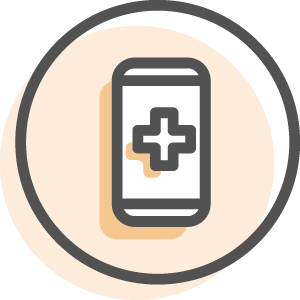
Convenient Telemedicine
Save time with virtual consultations with experienced HRT providers.

Individualized Care Plans
We go deeper to get to the root causes and create a protocol as unique as you are.
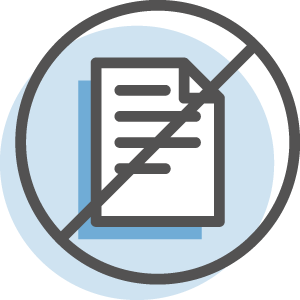
No Subscriptions or Contracts
You control your schedule and cost decisions, and only pay for what you need.
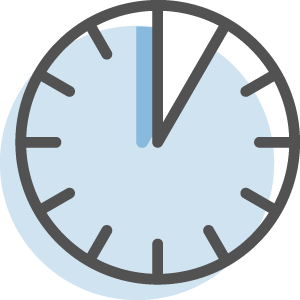
Extended 1-Hour Consults
Our providers listen. You can ask questions, discuss your most pressing symptoms, and more.
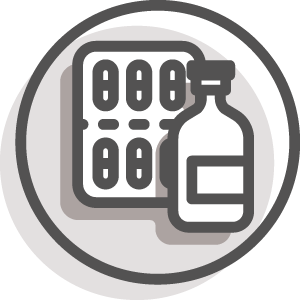
Access to TRT Options
Your Defy provider will discuss TRT options including injections, creams, pellets, and more.
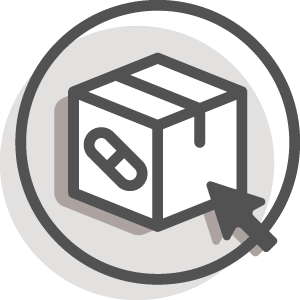
Access to Easy Pharmacy Ordering
Conveniently order prescriptions, supplements, and supplies through our online patient portal for direct-to-door delivery.

A Variety of Health Services
We also offer ED treatments, injectable nutrition, Primary Care, and more.
Work with the Experts
It’s easy to start your care. Just provide your information, and a Patient Advocate will reach out to you.
* denotes a required field.